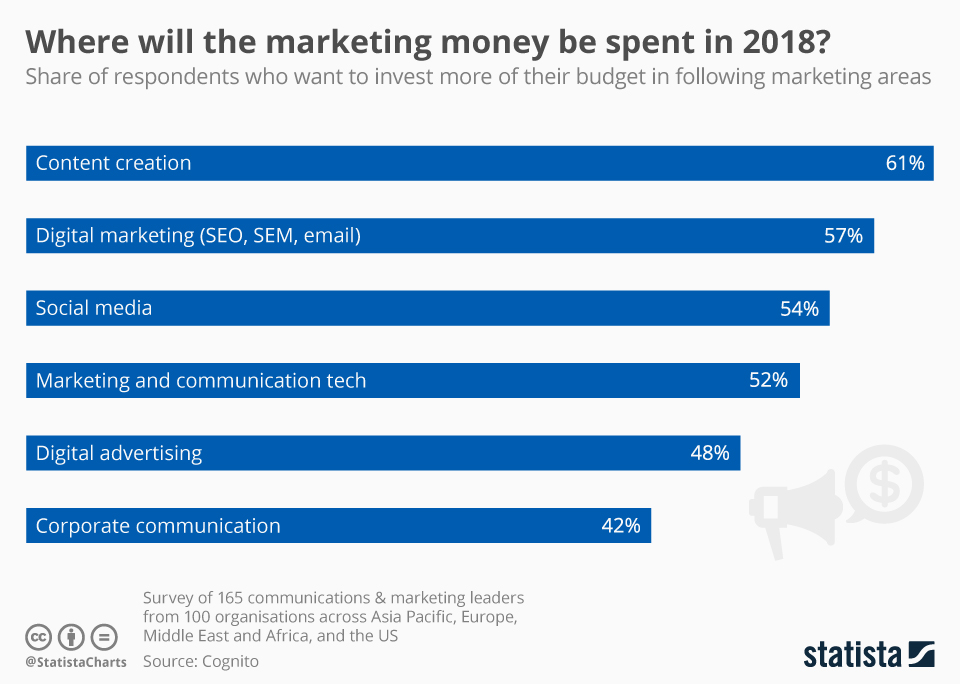Having a clear plan for your marketing budget is key to success in the upcoming year. Whether you’re already working with a big budget or just starting out, setting aside enough funds to cover your wants and needs goes beyond simply trying to get more bang for your buck.
2024 marks an exciting time for sales and marketing professionals alike, making it vital that you have a firm understanding of what makes up a successful marketing budget and how best to utilize the resources within your reach.
Establishing concrete goals at the outset should help you not to turn to additional sources of financing but rather to get 10k in 100 days envelope challenge and optimize the return on your investment from the beginning.
In this blog post, we’ll explore the fundamentals behind creating an effective marketing budget so you can make sure 2024 is one of continued growth!
Contents
Where Should Your Marketing Budget be Allocated?
Everywhere you look, marketing professionals put content creation on the top of their lists. A survey revealed that 61 percent of 165 marketing leaders they interviewed wanted to allocate more budget for content creation in 2018 – which is no surprise because only 18 percent of participants from the previous report were satisfied with their marketed material. This makes it evident why investing in creating quality content should be a priority for any marketer.
Investor relations and public affairs topped the list with 71 percent and 69 percent, respectively, in terms of investment that will remain unchanged. On the other hand, traditional advertising came off as a clear loser; only 40 percent of marketing leaders were interested in investing less.
 You will find more infographics at Statista
You will find more infographics at Statista
Step 1: Set Your Goals
Every successful marketing campaign starts with clear and concrete goals, so step one of planning a marketing budget is to set your objectives.
Start with the result in mind – think about whom you are trying to reach, what message you would like them to receive, and how you want them to respond. This strategy should be reflected in all aspects of your marketing plan and budget to ensure that all resources are properly allocated toward achieving these predetermined outcomes.
Furthermore, setting goals will provide measurable metrics so that you can track the progress and success of your efforts over time. Developing an effective marketing budget requires prioritizing your expenditures to ensure that they work towards the overarching mission of the campaign.
Step 2: Analyze Your Current Performance
Now that you have established your goals, it’s time to analyze how your current strategies are performing. To do this, take a look at key metrics such as website traffic, conversion rates, lead generation costs, and customer acquisition costs (CAC).
These metrics will give you an idea of where you should allocate more resources and where there might be room for improvement. By understanding which channels are performing well and which ones need more investment, you will be able to make better decisions on how much money should go into each area of your marketing budget.

Source: Canva.com
Step 3: Research Your Competitors
An essential part of planning an effective marketing budget is researching your competitors and factoring this into your overall strategy. Knowing who you’re up against will give you insights into their messaging, pricing, audience activation tactics, and other features that may be relevant to your budget.
Keeping tabs on rival brands gives you a chance to understand what works for them, detect trends in the market, look out for opportunities that could benefit your business, and anticipate how customers perceive different aspects of competing brands.
It’s a great way to gain a competitive edge that would otherwise take considerable effort to source. For those planning a successful marketing budget, tackling competitor research is an important step in the process.
Step 4: Estimate Costs & Allocate Funds
Estimating costs and allocating funds for a marketing budget is an essential step in the process. Businesses need to carefully assess their incoming and outgoing revenues for the strategy to determine their available resources.
When it comes to advertising and promotional activities, finance teams need to accurately calculate total estimated expenses based on factors such as media buys, creative, analytics, and services.
It’s also important for companies to separate their funds into multiple categories for different sectors of their promotions. Allocation of money should be determined by budgeting methods that match each marketing initiative with their respective costs so there is more clarity regarding where money is coming from and where it’s going.
With appropriate estimation and funding allocation processes in place, businesses can create a much smoother transition when it comes to executing their promotional tactics with effective results.

Source: esbo.ltd
Step 5: Review & Optimize As You Go
Throughout the year, review results from each initiative periodically so that adjustments can be made if needed – for example, if some tactics are not performing as expected, shift resources away from them towards other activities with higher ROI potential, etc. This process should be ongoing throughout the year so that changes can be made quickly before too much money is wasted on ineffective tactics or strategies.
Step 6: Monitor & Measure Results
When planning a marketing budget, it is critical to ensure that it is being used effectively. Consequently, monitoring and measuring the results of campaigns is important to establish if marketing tactics are achieving the desired outcomes.
Keeping track of key performance indicators such as conversion rate, cost per lead, or total impressions can help marketers understand which aspects of their campaign are working and which ones require more resources or adjusting. Regular reporting should be conducted to ensure that progress is being made throughout the entire campaign.
Alongside this, regularly assessing competition will provide valuable insights into how effective your strategy is compared to others in the industry. Overall, tracking performance metrics from the start will make it easier to formulate an effective marketing budget plan that gets results.

Source: Medium.com
Conclusion
Planning a successful marketing budget isn’t always easy, but following these 6 steps should help make the process smoother! Setting clear goals upfront & analyzing past performance will ensure resources are allocated correctly while researching competitors & estimating costs accurately ensures money isn’t wasted on ineffective tactics or strategies.
Finally, monitoring & measuring results regularly help spot discrepancies quickly before too much money has been invested! With these tips at hand, any business should have no problem creating an effective budget for 2024!
